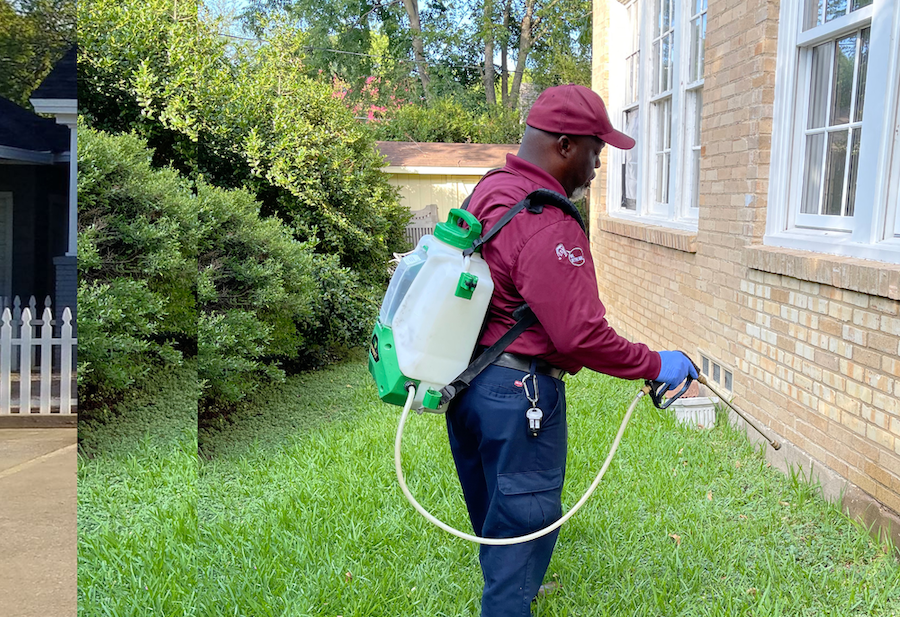Reliable A1 Bed Bug Treatment in Charlotte - Safe and Proven Approaches
Wiki Article
Bed Pest Treatment Break Down: Comparing Chemical Vs. Non-Chemical Solutions
In the world of pest control, especially when handling the persistent problem of bed pests, the option in between chemical and non-chemical therapy services can be a crucial one. Both methods use distinct advantages and disadvantages, affecting elements such as performance, security considerations, and general cost. By examining the nuanced information of each technique, a more clear understanding of which path to seek in addressing a bed bug invasion can be achieved.Performance of Chemical Treatments
Chemical treatments for bed bug problems have been commonly acknowledged for their fast and powerful effectiveness in getting rid of these parasites. When considering the performance of chemical therapies, it is essential to comprehend that they can supply a extensive and quick option to a bed pest problem. Professional exterminators frequently rely upon insecticides to target bed bugs at various stages of their life process, consisting of eggs, grownups, and nymphs. These chemicals generally work by interfering with the bed pests' nervous system, resulting in paralysis and eventual fatality.In addition, chemical therapies have the benefit of providing residual effects, indicating that they can continue to get rid of bed insects even after the preliminary application. This residual action is particularly beneficial in combating any type of prospective re-infestations. Additionally, the fast activity of chemical therapies can bring relief to individuals dealing with severe bed insect problems, permitting them to restore control of their living rooms rapidly.
Security Worry About Chemical Solutions
One essential element that requires careful consideration when using chemical remedies for bed pest therapy is guaranteeing the security of passengers and the setting. While chemical treatments can be reliable in eradicating bed pests, they may present risks otherwise dealt with correctly. Among the primary security worry about chemical options is the potential damage they can create to human health and wellness. Exposure to specific chemicals utilized in bed bug treatments can bring about breathing concerns, skin irritability, or various other negative responses, particularly in people with pre-existing problems or sensitivities. In addition, inappropriate application or dose of chemical pesticides can result in toxic deposits remaining in the treated location, posturing long-lasting wellness dangers to occupants.Moreover, the environmental influence of chemical services is an additional significant consideration. Some pesticides made use of in bed bug therapies might be unsafe to advantageous insects, wild animals, and communities if they leach right into the dirt or water systems. It is important to make use of chemical treatments deliberately, following security standards, and taking into consideration less harmful options to mitigate these threats and make certain the secure and effective management of bed insect invasions.
Benefits of Non-Chemical Strategies
Thinking about the potential security worries and ecological effect linked with chemical remedies for bed insect how can we control pests treatment, checking out non-chemical methods provides a promising option with numerous distinct advantages. Non-chemical therapies are environmentally pleasant, as they do not add to air or water air pollution, making them a sustainable option for parasite control.Additionally, non-chemical services can be effective in targeting bed bugs, including hard-to-reach locations where chemical therapies might not penetrate - A1 bed bug exterminator charlotte. Methods such as warm therapy, vacuuming, heavy steam cleaning, and mattress encasements supply comprehensive eradication without the use of dangerous chemicals.
Limitations of Non-Chemical Treatments

In addition, non-chemical treatments typically call for multiple applications to accomplish effective removal. This can be time-consuming and might not constantly guarantee total removal of all bed pests and their eggs, especially in hard-to-reach or hidden areas.
Additionally, the success of non-chemical therapies heavily depends on correct execution and thoroughness, which can be challenging for people without expert competence. Poor application of non-chemical techniques may result in incomplete eradication, bring about persistent infestations and the demand for additional treatments.
As a result, while non-chemical treatments have their benefits, it is necessary to acknowledge these restrictions and consider them when establishing the most reliable strategy for taking care of bed pest infestations.
Price Comparison: Chemical Vs. Non-Chemical Options
Offered the restrictions linked with non-chemical therapies, a crucial facet to review in the flea exterminator context of bed insect monitoring is the expense contrast between chemical and non-chemical alternatives. In comparison, non-chemical therapies like warm therapy or steam can be a lot more expensive, with expenses ranging from $1,000 to $6,000 for a whole home. While the first expense of chemical treatments might appear lower, several therapies may be called for to fully remove the infestation, potentially enhancing the total cost.Verdict

Considering the potential safety and security issues and environmental impact associated with chemical remedies for bed insect treatment, discovering non-chemical approaches provides a promising alternative with numerous distinctive advantages.Given the constraints linked with non-chemical therapies, a vital element to assess in the context of bed bug administration is the price comparison between chemical and non-chemical alternatives. In comparison, non-chemical treatments like heat therapy or vapor can be much more costly, with costs ranging from $1,000 to $6,000 for a whole home. While the preliminary cost of chemical therapies might seem reduced, numerous treatments might be needed to fully eradicate the infestation, possibly enhancing the total price.In conclusion, when contrasting chemical and non-chemical bed pest treatment alternatives, it additional hints is important to think about performance, safety and security, benefits, constraints, and expense.
Report this wiki page